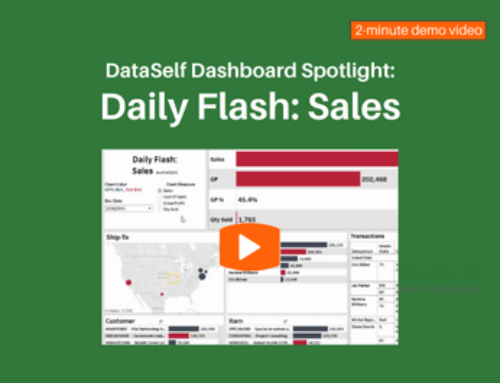Article copied from https://msdynamicsworld.com/story/three-factors-keep-your-bi-out-rut
How you select your BI system has a lot to do with the benefits you derive from it.

My observations in my 17 years of advising mid-sized organizations – plus observations of one other expert in the field – show three critical elements that decide whether new systems will lift you into new, valuable insights or leave you plowing the same old rut.
At the organizations that do it well, business users have taken an instant liking to the new tools, and executives embraced fact-based decision making. It seemed like every day, some business user found a new and more valuable use for data. Then year after year, the platform grew with the business’s evolving needs.
At less fortunate organizations, business users shrugged at the new tools or resisted them. They still couldn’t find the data they knew was there, and executives continued relying on “gut feeling.” The organization’s data, still inaccessible, moldered.
There are three basic factors that help companies steer clear of a BI rut: executive involvement, management of data flows from the backend to the users, and the close fit of platform and organization.
Executive commitment
“Too many C-level people get their tech information from their kids,” integration consultant Lamont Lockwood told me. He says that most execs use information that a few hard-working tech workers created for them. “To them, technology is a result, not a process.”
That’s a major mistake. To get results, decision makers must have at least a basic understanding of the process. Lack of executive involvement forces IT to make assumptions about executives’ priorities, milestones, and budgets. Budgets based on executives’ misinformed assumptions force IT to make magic or overspend. I’ve seen too many BI projects start with an inadequate budget because of executives have failed to engage.
In one case, the management of one Microsoft Dynamics client let the IT and finance department make budget recommendations, even though no one on those teams was a BI expert. They struggled with costs and features. Had management been more involved, they would likely have opted for a larger budget for a much better fit. As it was, they wasted more than one year in a rut, trying to fix the cheaper but hopelessly ill-fitting system.
In another case, a CFO we worked with had been unhappy with our results initially. For over a month, we worked on adjustments deemed important by his IT team. He said, “I want to access my data as soon as possible, so I can tell you what adjustments to focus on.” In two days, he saw for himself how rough his data was. His new, specific directions let us know exactly where to put our focus.
Expertise to select and implement a BI system
Growing SMBs have data needs that are comparable to large enterprises. Though SMBs don’t match enterprises in data volume, they often do in data complexity – and that calls for expert help in selecting a BI platform.
I’ve seen many companies picking a BI solution only to realize that it was underpowered, too complex, or too slow. They dump it and start all over again.
One distribution company started to use Power BI from their Dynamics ERP. It seemed like the natural step, with a web- and mobile-based user interface and some canned connections to the ERP system. However, they didn’t realize this solution couldn’t handle their data consolidation. They spent over a year trying to make it work. In the end, they faced facts: the system was too complex and performed poorly. Had BI experts been involved early on, they would have taken a more appropriate path (including a data warehouse) that would have avoided a year of frustration and a wasted six-figure investment.
Successful BI selection and implementation call for expertise in a variety of areas, including these:
- data sources such as ERP, CRM, payroll systems, and Google Analytics
- data consolidation with a data warehouse
- reporting and analytics tools
- translation of business needs into technical requirements and vice-versa
- project management.
A well-fitting BI platform
The BI tool has to match the business needs. The dozens of tools available to mid-sized companies vary widely in functionality, ease of use, and performance. Some come dedicated to specific functions, such as alerts or budgeting. Some are platforms, into which analytics tools, budgeting, alerts, and data mining tools connect.
The distribution company I mentioned above is an example of ill-fitting BI. The team selecting the initial solution didn’t have enough expertise to know that the path they took could not perform at reasonable speed, and would require tons of custom work.
The best platform is the one that satisfies the organization’s needs. What’s the scope of your questions? What are your data sources? How much data do you have now and what do you expect to have a few years out? What tools do you have already?
How easily can you adapt to new questions? They are inevitable. Will someone from IT have to go in and reconfigure, or can you adjust on the fly? Does your technology “break” easily? Maturity is important.
Out of the rut
Lockwood and I agree that the right order to avoid BI ruts is this: get the executives involved, find the right technical expertise, and then buy technology that fits now and offers the best chance of adapting as business evolves.
We also know how tough it is to do well. That’s why each of us offers unbiased education to those who inquire. We give the good and the bad news.




